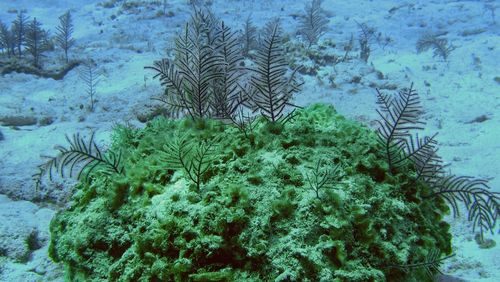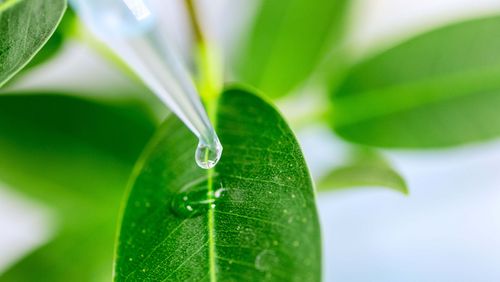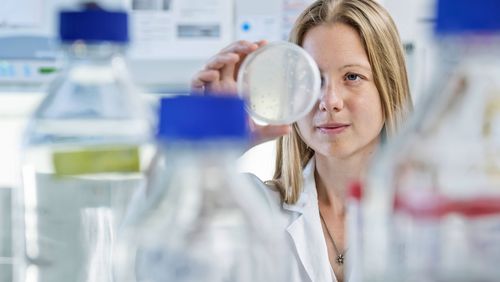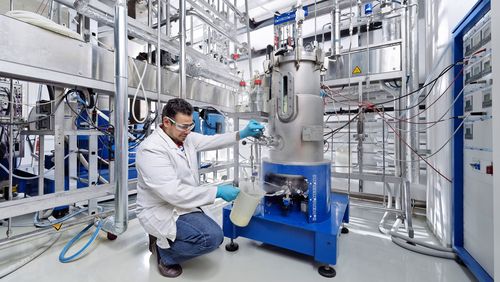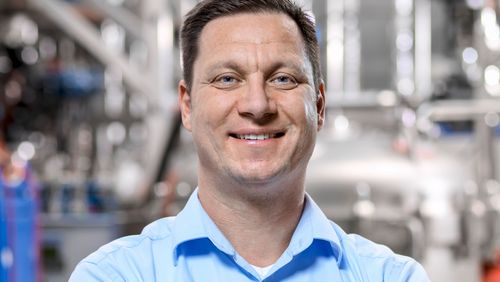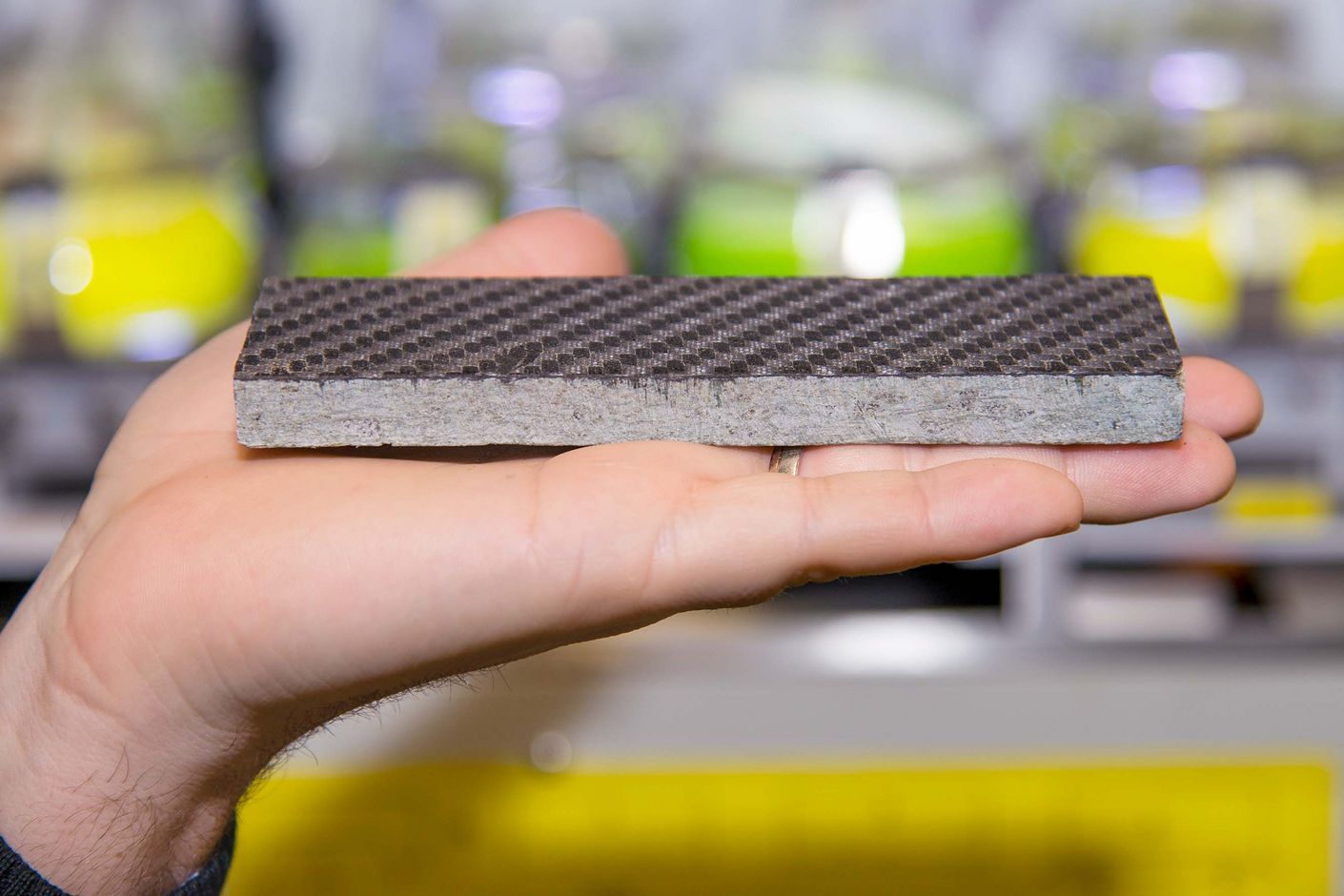
Green carbon
2019 proved another successful year for Werner Siemens Foundation Endowed Chair Thomas Brück and his team at the Technical University of Munich: their innovative organic pest spray won the backing of major partners from research and industry, and they landed another coup with their Green Carbon project, a CO2-neutral process for producing carbon fibres.
The new organic pest spray developed in 2018 by Werner Siemens Foundation Endowed Chair Thomas Brück and his team at Synthetic Biotechnology could not have been unveiled at a better time. Shortly beforehand, the EU had issued a ban on standard neonicotinoid pesticides, as these products destroy not only pests but also beneficial insects such as bees and butterflies. Rather than killing insects, the innovative organic pest spray uses cembratrienol, an odorous natural substance, to repel the pests for a certain period of time.
Perfecting the pest spray
In 2019, Thomas Brück was able to partner with the Institute of Sugar Beet Research in Göttingen and German agricultural company Südzucker to carry out the first tests with the organic pest spray; the results confirmed that cembratrienol repels aphids, whiteflies and fruit flies. Based on this success, Thomas Brück and the two partners acquired a large follow-up project entitled “OleoBuild”, which aims to transfer the production of cembratrienol to the oil-producing yeast Rhodotorula sp. This would increase the yield of cembratrienol and make it available as a completely formulated product for direct use in agriculture. The necessary financing is expected to be secured by the end of 2019.
Yeast: the ideal host
The researchers have already analysed the biochemical processes behind the production of cembratrienol in tobacco plants and were also able to identify and genetically modify the genes responsible. As a result, they no longer need to import tobacco plants to produce cembratrienol: the entire process takes place in the labs of the Synthetic Biotechnology group at the Technical University of Munich (TUM). The researchers now plan to chemi-cally modify the active agent, further concentrating it until the odour is twice as potent as in its natural state.
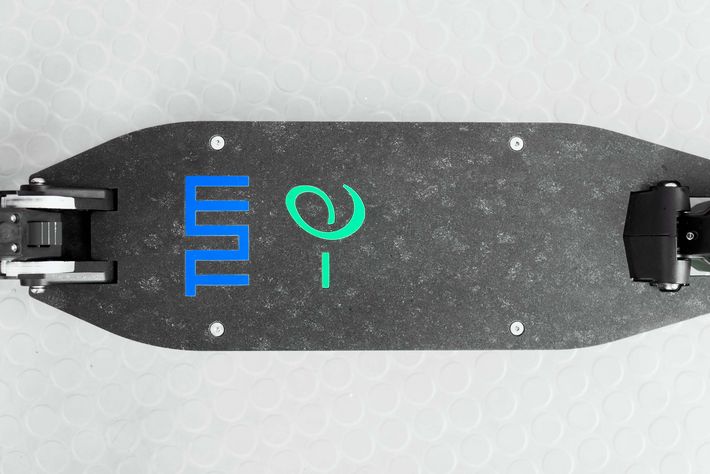
Waiting for EU approval
The next step for the team is to obtain EU certification for the organic insect spray. The regulatory authorities carry out tests on toxicity, degradability, stability, storage life and other aspects of new agricultural chemicals—a process that takes about three to five years. “We have very little experience in approval procedures,” says Brück, “but Südzucker is one of Europe’s largest sugar producers, so we’re fortunate to have their know-how and support.” When developing new products, having major partners from industry on board is important—also for financial reasons, as approval procedures cost hundreds of thousands of euros. But the investment is worthwhile: if the application is successful, the new crop-protection product can be sold throughout the entire European market.
Fuel from algae
Another major success for Thomas Brück and his team in 2019 was the progress made in their oleaginous algae project. The team created a procedure that enables a steady production of fuel from algae, a development that has been greeted with enthusiasm by cooperation partner Airbus, which is interested in non-petroleum fuels for aeroplanes. The Synthetic Biotechnology researchers have also turned their attention to a by-product of algae-oil production: glycerol. When algae produce fatty acids, a considerable amount of glycerol is also produced—and the potential of this natural by-product has not escaped the researchers. They have now developed a chemical process that enables carbon fibres to be produced from the CO2 released when the algae perform photosynthesis. The basic substance the researchers use is algae oil, which, with the help of enzymes, is broken down into free fatty acids and glycerol. The glycerol is then chemically converted into polyacryl-onitrile, the standard basic product for all commercial carbon fibres. The new process is 100 percent emissions-free and absorbs more CO2 from the atmosphere than it emits. How is that possible? The basic organisms are fast-growing microalgae that store CO2 as biomass and bind it in, for instance, the form of sugar and algae oil.
CO2-neutral carbon fibres
Thomas Brück is delighted with the developments: “Our process has the potential to revolutionise the production of carbon fibre. Until now, carbon fibres have left a considerable carbon footprint because their pro-duction is energy-intensive and uses unecological petroleum precursors. Now, climate change is making it urgent that we soon shift to a CO2-neutral und economical process.” On the basis of various technological and economic criteria, Thomas Brück and his team evaluated the process for producing algae-based carbon fibres and came to the clear conclusion that the process is industrially viable. Soon after the results were published, they were cited in the World Climate Report in the section “Substitution and circularity” as a systemically relevant net sink of CO2 to mitigate global climate change. For this innovation, Thomas Brück was awarded the 2018 “e-ward” of the European Business Council for Sustainable Energy, an NGO that is dedicated to the implementation of climate-friendly production processes.
Major project: Green Carbon
In July 2019, Thomas Brück launched a major project for his innovative method of carbon production. Named “Green Carbon”, the project receives 8.9 million euros in funding and involves five academic departments at TUM: materials science, chemical tech-nology, mechanical engineering, biochemical engineering and synthetic biotechnology. The industry partners involved in the project are Daimler-Benz, Airbus and SGL Carbon, the largest European producer of carbon fibres. “We pretty much invented the project and coordinate it,” Thomas Brück says with pride.
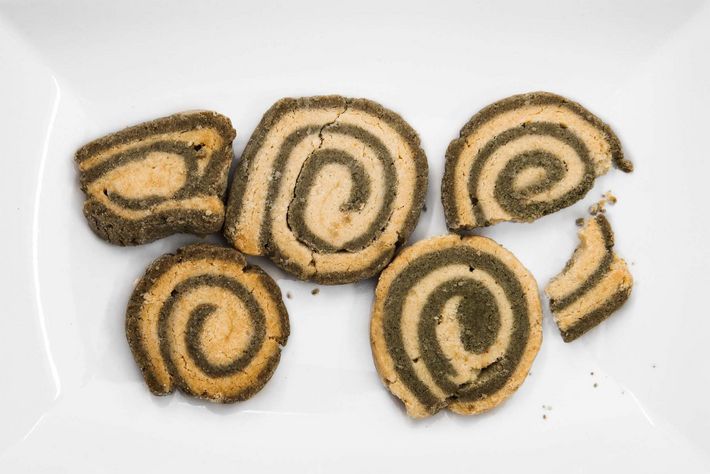
Sturdy, light, flexible
Another significant player in the Green Carbon project is a mid-size company: TechnoCarbonTechnologies. The company was founded by engineer Kolja Kuse, who was the first to combine carbon fibres with natural stone to create CO2-negative construction elements. And the construction industry urgently needs such solutions, as it consumes giga-tons of materials such as cement and steel, whose production is CO2-intensive. “With our carbon fibres made from glycerol produced by algae, we can make a relevant contribution to countering climate change by replacing cement with a carbon-stone composite,” says Brück. The most suitable stone for the composite material is granite: it is available worldwide and, when combined with carbon fibres, is as light as aluminium and even flexible. That means that instead of constructing buildings with steel frames and concrete walls, they could be constructed using strong, light and flexible carbon-granite. Green carbon would also be a viable material for the production of e-bikes, electric cars and aeroplanes.
Repositories in brown-coal mines
Thomas Brück has already given thought to the disposal of the new material: after diamonds, carbon fibre is the most stable form of carbon and it neither releases toxic substances nor outgases CO2. For this reason, used carbon-granite could be disposed of in renaturalised brown-coal opencast mines, and with it the carbon contained therein. “We are aiming to achieve reverse geo-engineering,” says Brück. “Our process makes it possible to put CO2 emissions to economic use and then dispose of them effectively—a revolutionary concept!”
Delicious algae cookies
Thomas Brück and his researchers are also cooking up smaller but no less creative ideas with their newest product made from Dunaliella sp. These algae produce more folate than any other algae, and it was this property that inspired the team to branch out a little—and bake algae cookies! The novel swirl cookies not only contain more folate than the average cookie, but also 30 percent more protein. That is why they taste so good, even with only half as much sugar as similar types of baked goods. The team served the algae cookies to the Bavarian association of millers, who were very impressed with the new idea. And no wonder: the algae cookie is vegan and thus fully on-trend.
A worthwhile investment
Certification processes cost considerable time and money, and not all proposals made by the Synthetic Biotechnology team are approved first go—their proposal to the EU to produce the cancer drug Taxol was narrowly rejected. Nonetheless, Thomas Brück is convinced that the Werner Siemens Foundation is right to support the new discipline: “The funds invested in the new professorial chair for synthetic biotechnology and its staff have increased over tenfold in the past two years. Today we are leading the way in the development of sustainable technologies that convert CO2 and residual biomass into valuable processes—for the food and cosmetic industries as well as for chemical and pharmaceutical companies. The citation in the World Climate Report confirms the global significance of our research. We thank the Werner Siemens Foundation for giving us the freedom to convert our innovative ideas into real processes and products that generate value for society—fully in the spirit of our new motto ‘Bringing Synthetic Biotechnology to Life’.”
Text: Brigitt Blöchlinger
Photos: Andreas Battenberg
